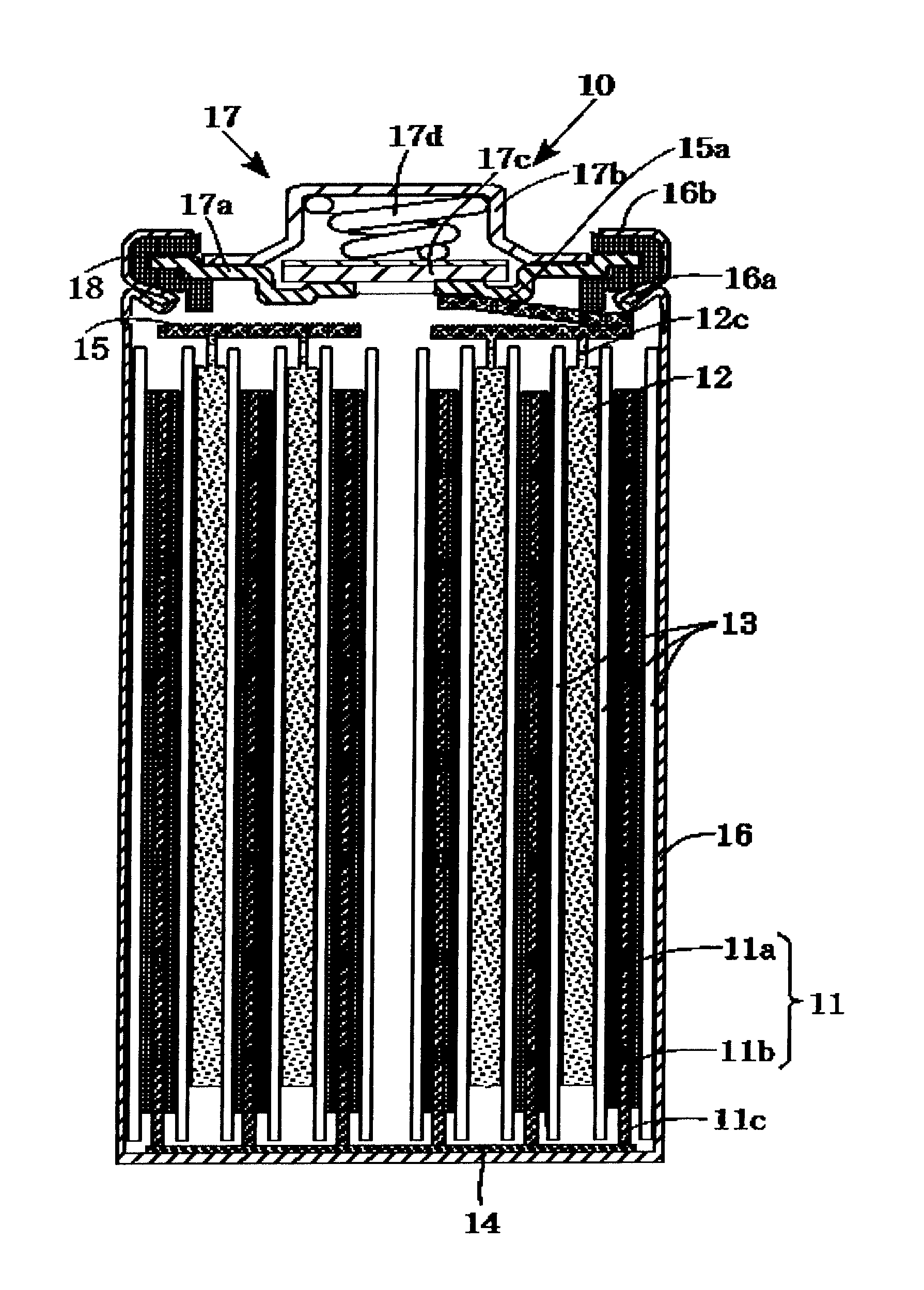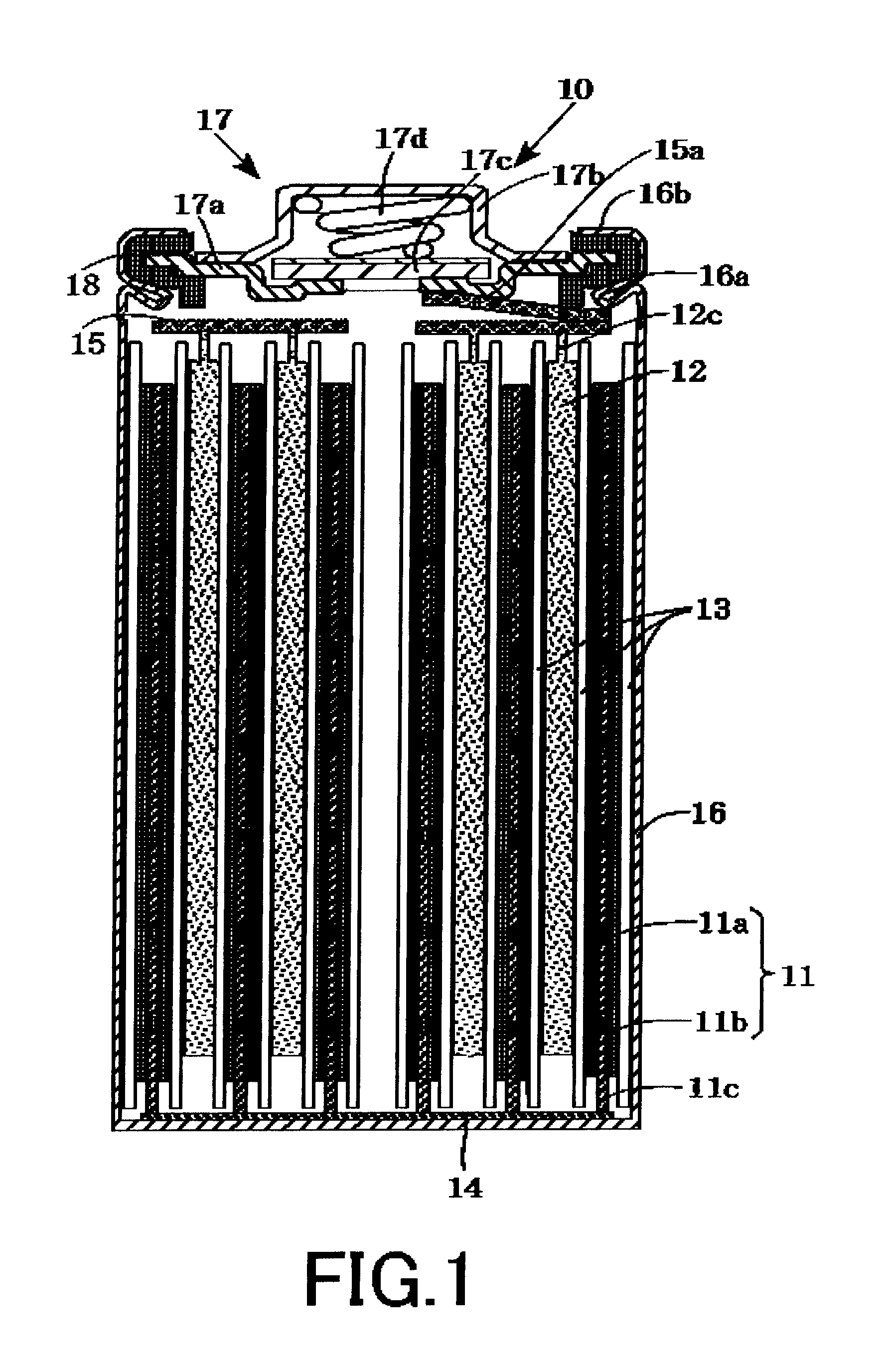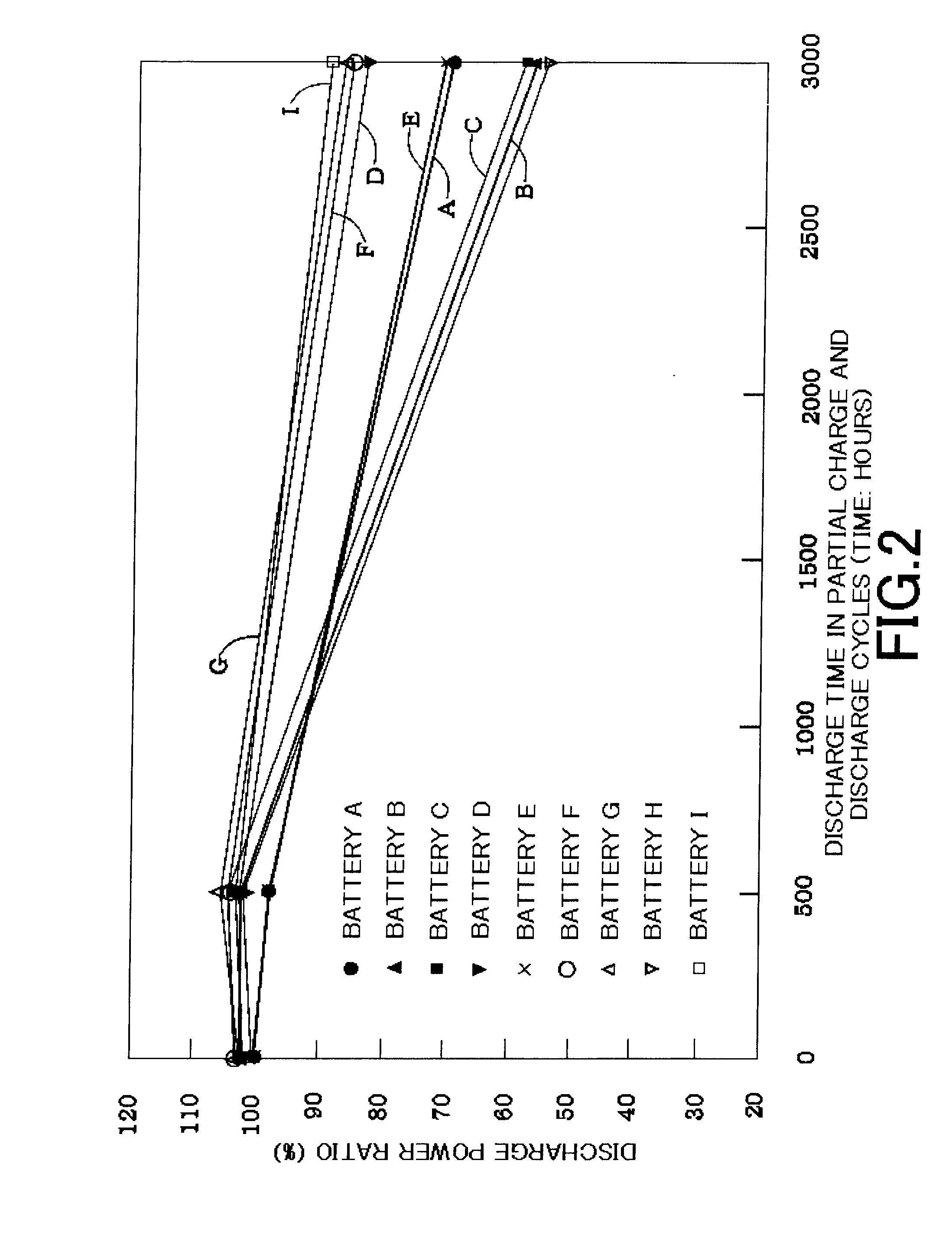An
advantage of some aspects of the invention is to provide a hydrogen storage alloy for an alkaline storage battery that improves output power by pulverization of the hydrogen storage alloy in the initial stage of partial
charge and discharge cycles and that maintains a surface condition of the alloy to greatly improve the amount of lifetime work (Wh), and an alkaline storage battery and an alkaline storage battery
system each including a negative electrode using the alloy.
As an example of the hydrogen storage alloy according to these aspects of the present invention, if an alloy is expressed by the composition formula above, each of x, n, and m is within the value range, and the main phase has an A5B19 type
crystal structure, the component ratio of subphases such as an AB3 type structure, AB5 type structure, and A2B7 type structure that reduce the flatness in a
plateau region of a PCT curve is controlled in a predetermined range. Thus, the plateau region of the PCT curve of the hydrogen storage alloy has a small slope and high flatness, and therefore a hydrogen storage alloy for an alkaline storage battery obtains excellent stability of the output characteristics.
In this case, if the ratio X / Y of the
concentration ratio X (Al / Ni) (%) of aluminum (Al) to
nickel (Ni) in a
surface layer and the concentration ratio Y (Al / Ni) (%) of aluminum (Al) to
nickel (Ni) in a bulk layer is 0.36 or more and 0.85 or less (0.36≦X / Y≦0.85), the
surface layer has a lower Al concentration than that in the bulk layer. Hence, an alkaline storage battery using the hydrogen storage alloy according to the aspect of the invention reduces a trouble that Al is eluted from the hydrogen storage alloy into an alkaline
electrolyte and moves to the positive electrode to break into positive electrode active material, and as a result, durability of the alkaline storage battery is reduced.
The surface layer of the hydrogen storage alloy means the region showing a different form from that of the bulk layer (they are distinguished by their brightness under transmission
electron microscopic observation on a cross-section of the hydrogen storage alloy
powder). The surface layer is also the region from the surface of a hydrogen storage alloy to the depth where an alkaline electrolyte can be impregnated in an alkaline storage battery. Commonly, a hydrogen storage alloy for an alkaline storage battery has a surface layer having a thickness of about 100 nm. Thus, a
reduced concentration of Al contained in the region can effectively suppress the
elution of Al from the hydrogen storage alloy into an alkaline electrolyte.
In this case, it is revealed that the total discharge power time (amount of lifetime work: Wh) is greatly improved when the hydrogen storage alloy negative electrode is controlled to retain the alkaline electrolyte in a retention amount (Z1) of 95 mg or more and 125 mg or less (95 mg≦Z1≦125 mg) per
gram of the hydrogen storage alloy before partial
charge and discharge cycles (before use). This is thought to be because the control of the hydrogen storage alloy negative electrode to retain the alkaline electrolyte in the predetermined retention amount (Z1) before partial
charge and discharge cycles (before use) makes an alkaline electrolyte always present on the surface of the hydrogen storage alloy. If the alkaline electrolyte is always present on the surface of the hydrogen storage alloy in this manner, it is supposed that the progress of oxidation on the
alloy surface is suppressed after the progress of the pulverization in the initial stage of partial charge and discharge cycles, and thus the total discharge power time (amount of lifetime work: Wh) is increased. In order to achieve a state where the alkaline electrolyte is always present on the surface of the hydrogen storage alloy as mentioned above, a separator preferably retains the alkaline electrolyte in a retention amount (P1) of 660 mg or more and 1160 mg or less (660 mg≦P1≦1160 mg) per
gram of the separator before partial charge and discharge cycles.
In the invention, the progress of pulverization of the hydrogen storage alloy in the initial stage of partial charge and discharge cycles improves the output power in the initial stage of partial charge and discharge cycles, and the pulverized state can be suitably maintained. As a result, the total discharge power time (amount of lifetime work: Wh) can be greatly increased after 6000 hours in the partial charge and discharge cycles (a discharge time of 3000 hours).
 Login to View More
Login to View More 


